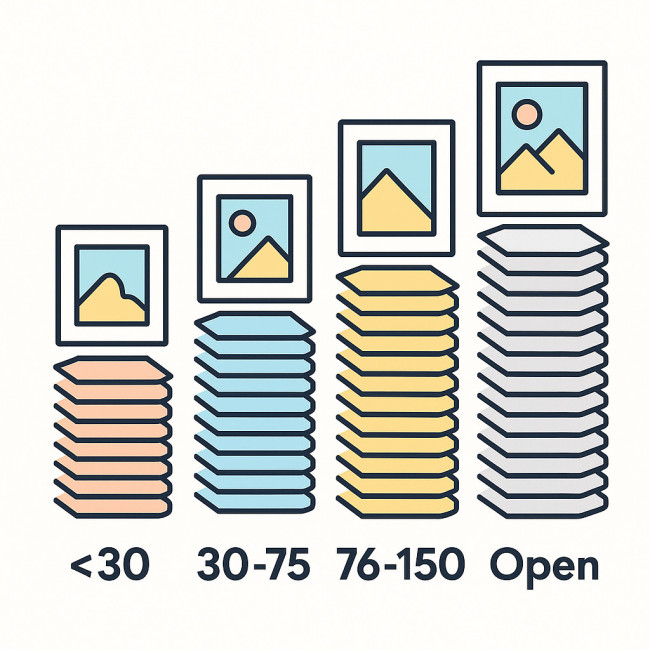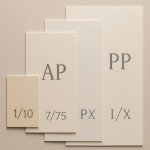Hiring a printmaker in 2025: edition sizes, rights and budget decoded
Commissioning a limited-edition print looks simple—until you juggle edition sizes, usage rights, paper costs and shipping fees. This step-by-step guide ensures you hire a printmaker in 2025 with clarity, confidence and a budget that covers every hidden line item.
Why hiring a printmaker feels different in 2025
Collectors crave tactile work again
After years of digital saturation, buyers want objects they can frame, gift or hold. Auction data from 2024 shows a 28 % jump in contemporary print sales, driving up artist wait-lists and minimum orders.
Tech and sustainability reshape workflows
Water-based UV inks, blockchain certificates and carbon-neutral papers are now standard talking points. Before you brief a studio, review these eco-friendly ink and paper choices so you can align values and avoid last-minute substitutions.
Studios collaborate like shared kitchens
Many print shops now pool presses and staff to serve global clients. If you need larger runs, explore studio partnerships that combine specialist skills while protecting intellectual property.
Edition sizes: balance scarcity and reach

Edition size influences price, demand and long-term brand equity. Use the matrix below to decode common tiers.
| Edition size | Typical price uplift* | Ideal for | Risk factor |
|---|---|---|---|
| < 30 copies | +45 % vs open edition | Gallery releases, VIP gifts | Stock-outs within weeks |
| 30 – 75 copies | +30 % | E-commerce drops | Moderate—requires strong launch |
| 76 – 150 copies | +15 % | Brand collaborations | Overproduction if promo weak |
| Open edition | Baseline | Mass-market décor | Limited resale value |
*Average mark-ups taken from the Art Basel & UBS Art Market Report 2024.
Need deeper guidance on numbering? Read our edition numbering rules to avoid rookie mistakes.
Choose a size by asking three questions
- Audience: Are buyers seasoned collectors or first-time art shoppers?
- Marketing reach: Can you sell out 75 copies within a 60-day window?
- Future plans: Will scarcity limit future licensing deals?
Rights and licensing clauses you must negotiate
Hiring a printmaker in 2025 means tackling both physical and digital rights. Clear terms now prevent legal headaches when your work appears on billboards or NFTs later.
Key clauses to include
- Territory: Define where prints can be sold or displayed. “Worldwide” may sound simple but can inflate royalties.
- Duration: Limited-term licenses (two to five years) allow renegotiation as your brand grows.
- Medium extensions: State whether the design can migrate to apparel, packaging or virtual galleries.
- Artist proofs: Confirm how many extra signed copies the printmaker retains for promotion.
For a deeper dive into royalty splits and IP protection, check our royalty models guide.
Real-world example
A lifestyle brand commissioned 50 linocuts for a pop-up. They licensed EU retail rights for three years but kept online exclusivity. After 18 months, secondary sales justified a re-license at a 20 % higher fee.
Budget breakdown: from concept to doorstep

Sticker shock often comes from overlooked items like plate tests and humidity-safe sleeves. Below is a typical cost structure when you hire a mid-career printmaker for a 50-piece run.
- Creative fee: Concept development, sketch revisions.
- Pre-press: Screen or plate prep, colour proofs.
- Materials: Paper, inks, solvents, replacement screens.
- Printing labour: Hourly rate or per-pull fee.
- Finishing: Deckled edges, embossing, numbering, signing.
- Packaging & shipping: Tubes, insurance, customs papers.
- Certificates & blockchain minting: Optional but trending.
Source : Hiscox Online Art Trade Report 2024
Budgeting tips that save headaches
- Order 10 % extra paper to cover misprints.
- Consolidate freight by shipping artist proofs and main run together.
- Share freight pallets with peers you meet via the print fairs calendar.
Workflow timeline: 6 milestones you must lock
- Brief & reference mood board: Day 0.
- Technical mock-up: Day 7—sign off colour layers.
- Plate burning / screen exposure: Day 14.
- First pull & proof approval: Day 21.
- Main edition printing: Day 25-35.
- Finishing, signing, shipping: Day 36-45.
Want to see how professional image designers manage timelines? Browse this curated printmaker portfolio to benchmark communication standards.
Mini-quiz: Test your printmaker readiness
FAQ
- How far in advance should I book a printmaker?
- Popular studios fill three to six months ahead. Secure a slot once your concept and budget are confirmed.
- Do I need separate rights for social media promotion?
- Usually no. Most print contracts include promotional use, but confirm “digital marketing rights” in writing.
- Can I split the edition across multiple paper stocks?
- Yes, but number each variant separately (e.g., 1/30 on cotton rag, 1/20 on washi) to avoid buyer confusion.
- What insurance covers a lost print shipment?
- Declare full artwork value and purchase fine-art transit insurance—standard couriers cap liability too low.
- Is blockchain certification worth the extra cost?
- For editions under 100 copies, certificates boost buyer trust and resale transparency; cost averages $4-$6 per unit.
Next steps
Hiring a printmaker in 2025 no longer feels opaque. Define your edition size, lock licensing clauses, and budget each production phase. When you are ready, share your brief with shortlisted studios and request itemised quotes.
Ready to commission your next print run? Post your project today and secure a production slot before peak season.











